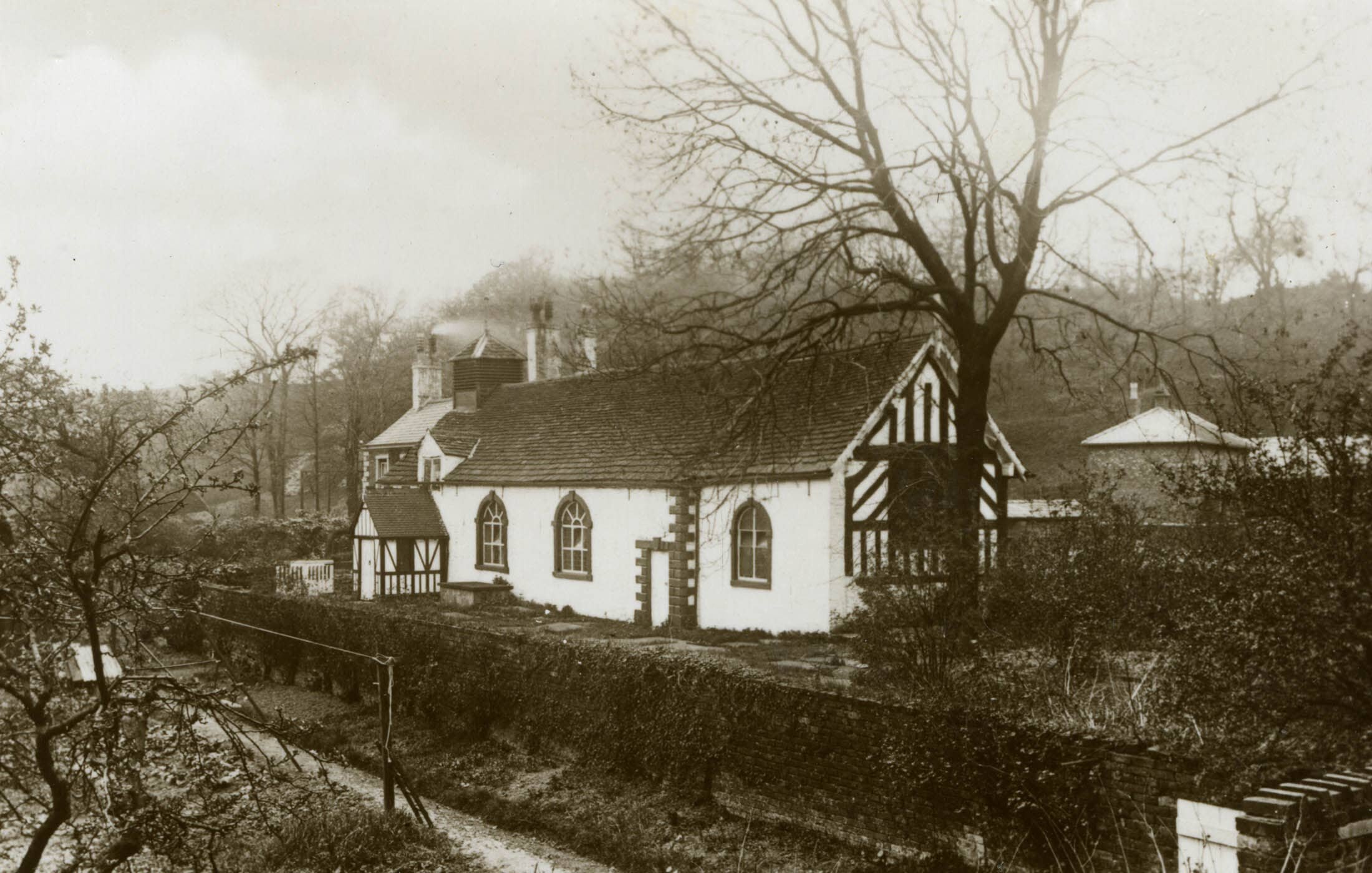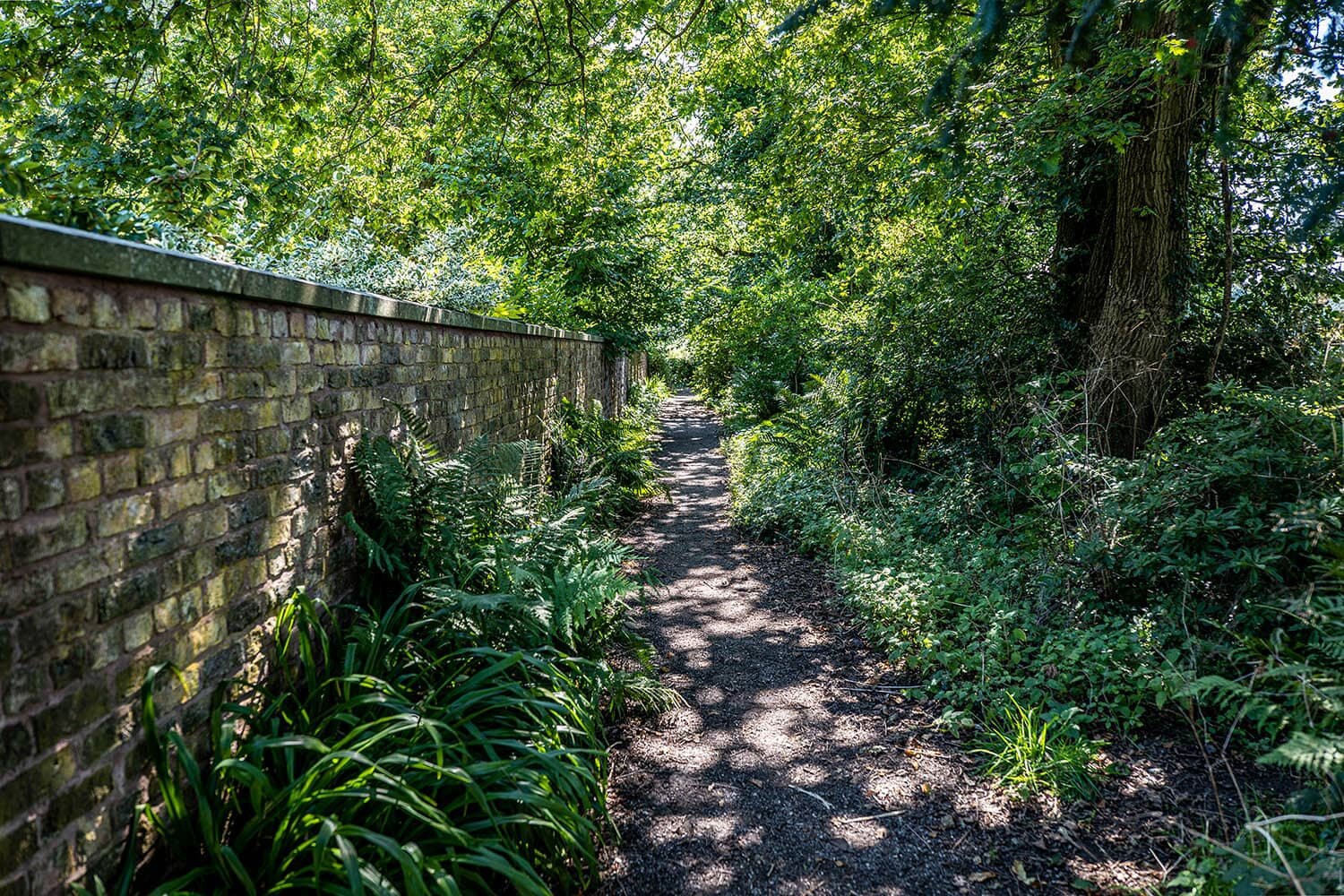
history of Chadkirk Chapel
the oldest parts of the present building probably date from the 16th century.
The name Chadkirk means ‘St Chad’s Church or Chapel’ and the ‘kirk’ part, which comes from the Norse dialects, reminds us that in the 9th century, Viking settlements were numerous enough in North East Cheshire to influence the local forms of English.
Tradition says that St Chad, who was Bishop of Lichfield from 669 to 672, founded a monastic cell here. Certainly, in 1347, there was mention of a William, a chaplain, who was described as ‘de Chaddkyrke’. That might mean that he was the Chaplain of Chadkirk or simply that he was a chaplain and came originally from Chadkirk. Either way, there was a place already known as Chadkirk.
Chadkirk Chapel is a simple, rectangular building of two parts: a nave and a chancel. Its plan is similar to that of churches known to date from Anglo-Saxon times. However, the oldest parts of the present building are the half-timbered walls of the chancel and the roof trusses, which probably date from the 16th century. The south wall of the chancel and nave were completely rebuilt in dressed stone in 1747.
The bell-cote at the west end is Georgian, and the bell itself, repaired and rehung in 2000, retains its original inscription ‘In God We Trust 1752’.
By the 16th century, the chapel was being used as a ‘chantry chapel’, a chapel where masses were said for the souls of the dead. However, when the chantries were suppressed under King Edward VI (1537–1553), the Davenport family (who had owned the estate since 1381) protested that Chadkirk was not just a chantry chapel.
They claimed it was a family chapel which was used to ‘cristen, burie and wedde’, and it was allowed to remain.
By the 1640s, the chapel was being used by a Puritan congregation and, in 1686, just a few weeks after the passing of the Toleration Act, it was registered as a Non-Conformist place of worship – the first in Cheshire. However, in 1705, the Non-Conformists were evicted and built a new chapel nearby at Hatherlow. Chadkirk Chapel fell into disrepair but having been taken over once more by the Church of England, it was restored by public subscription in 1747.
Three further restorations followed: in 1761, 1860 and 1876 – but in 1865, a new Church of St Chad was built just a short distance to the north, in Romiley.
The old chapel was used only for Sunday afternoon services and the fabric once more decayed. In 1971, the chapel was declared redundant and sold to Bredbury and Romiley Urban District Council for community use.
Further repairs took place in 1973. The next year, following local government reorganisation, ownership passed to the newly formed Metropolitan Borough of Stockport, which is now responsible for its care and use.
By 1987, further structural deterioration had occurred and the chapel had to be closed to the public. Then, in 1994–95, with external funding having become available, it was again restored.
Archaeological excavations
Between the early 1990s and 2005, before the chapel had its last restoration, it was surveyed by the Archaeological Unit at the University of Manchester. You can download and read the five reports created by the teams – they make for interesting reading, including showing that the chapel was at one time used as a cow shed.

Subscribe to our newsletter
Get news and updates

